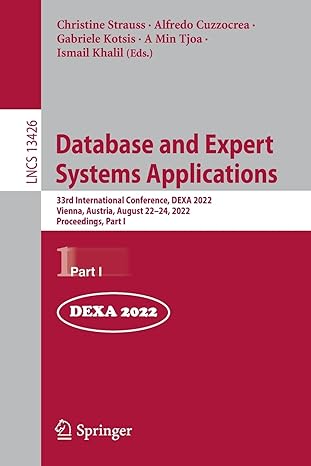Question
Create an Array of 4-digits student IDs of Size 500 using the random generator function. Display the array. (B) Using division method for a hash
Create an Array of 4-digits student IDs of Size 500 using the random generator function. Display the array.
(B) Using division method for a hash function H and a hash table of size m, a prime number, store your data of 4-digits student IDs (n=500) to a hash table which is an array of linked list for collision resolution.
H (k) = k mod m
m : The size of hash table. A prime number larger than and not too larger than 500 / 3 and 2**5 < m < 2**6 and not too close to the power of 2.
** means power of 2.
(1) Create 500 4-digit student IDs using random number generator; And mapped to hash table where each cell is chained to a link list.
(2) Print out hash table with contents of each cell (addresses) which are head pointers pointing to a chain of linked list of IDs.
(3) Do 20 searches 17 with ID found and the other three with ID not found.
(4) Use the counter during the searches to compute the line of statements
each searching goes thru which are roughly representing the computation time.
(5) Display ID to be searched and the result for each search with the computation time by counting the number of times the search function has gone thru.
(C) Use sequential search to search a student-ID.
For each search, print the ID to be searched and count the number of times the sequential search function has gone thru. And print the count for each search.
Do same as B(3), B(4) and B (5).
(D) Now compare the computation complexity of Sequential Search and Hashing in the tabular form or in a graphical form.
Step by Step Solution
There are 3 Steps involved in it
Step: 1

Get Instant Access to Expert-Tailored Solutions
See step-by-step solutions with expert insights and AI powered tools for academic success
Step: 2

Step: 3

Ace Your Homework with AI
Get the answers you need in no time with our AI-driven, step-by-step assistance
Get Started


